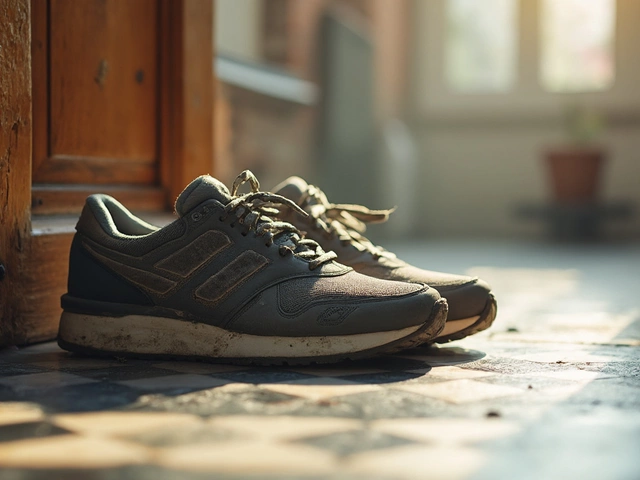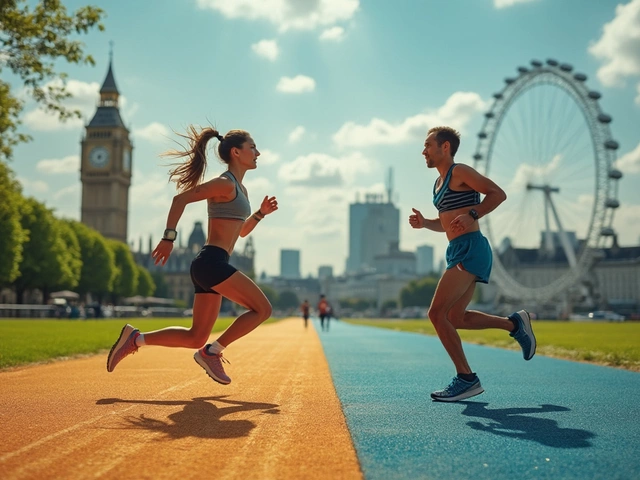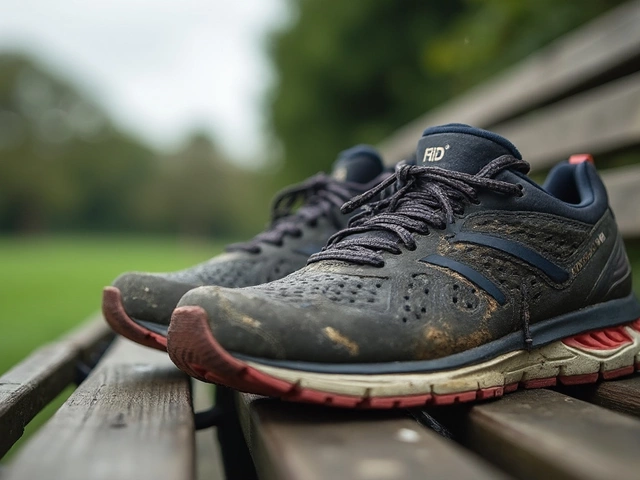Sneakers vs Barefoot Running: Which Is Better?
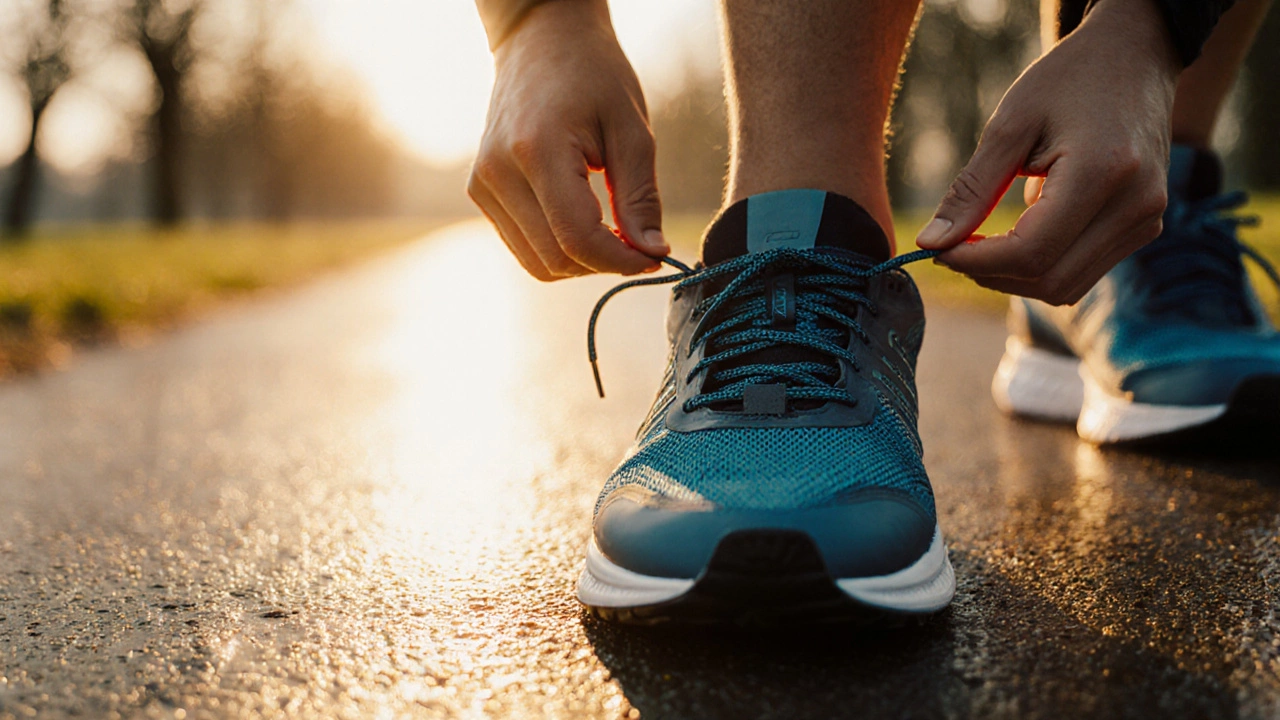
Imagine lacing up a pair of sleek sneakers for a morning run, then wondering if ditching them for the feel of the ground beneath your feet could actually boost performance. That debate-sneakers versus barefoot-has runners split down the track.
Barefoot Running is a style of running without traditional shoes, relying on the foot’s natural cushioning and proprioception. Proponents argue that it lets the foot work as it was designed, while critics point to the harsh impact of hard pavement. To answer the question, we need to break down biomechanics, injury data, and practical considerations.
Running Sneakers are engineered footwear that provide cushioning, stability, and motion control for a variety of running styles. Modern shoes incorporate foam midsoles, carbon plates, and heel drops that can change the way a runner lands and pushes off.
How foot strike changes with shoes
The moment your foot meets the ground, two main patterns emerge: a heel strike (most common in shoe‑wearers) and a mid‑foot or fore‑foot strike (typical in barefoot runners). Shoes with a high heel‑to‑toe drop encourage a heel‑first landing because the heel is elevated, reducing strain on the calves. Barefoot running forces a more natural fore‑foot or mid‑foot landing, which shortens the braking phase and can lower impact forces.
Benefits of running sneakers
- Cushioning: Modern foams absorb up to 65 % of impact energy, protecting joints during long, high‑volume runs.
- Support for overpronation or supination, reducing the risk of stress fractures.
- Versatility on mixed terrain-trail, pavement, and treadmill alike.
- Reduced fatigue on downhill sections thanks to heel‑drop geometry.
Benefits of barefoot running
- Improved proprioception-your brain gets real‑time feedback from the foot’s many sensory receptors.
- Strengthened intrinsic foot muscles, which can enhance arch stability and reduce plantar fascia strain.
- Shorter stride length and higher cadence, both linked to lower injury rates in several studies.
- More natural gait encourages better posture and less knee torque.
Potential drawbacks
Both approaches carry risks if you jump in without preparation.
- Running Sneakers: Over‑reliance on cushioning can lead to a “soft‑landing” habit, weakening foot muscles over time. Some shoes are heavy, adding energy cost on fast intervals.
- Barefoot: Sudden exposure to hard surfaces can cause metatarsal stress fractures, bruised heels, or plantar abrasions. Lack of toe protection makes you vulnerable to sharp objects.
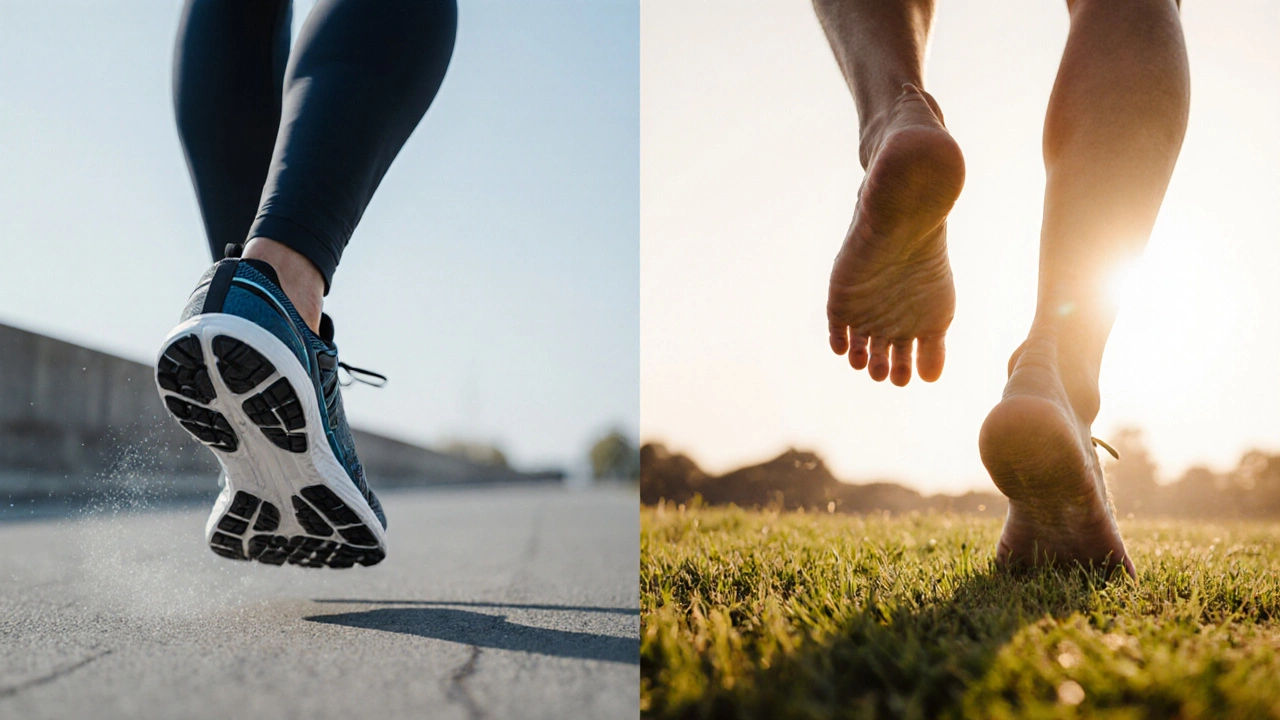
Injury statistics
Research from the University of Calgary (2023) tracked 1,200 runners over two years. The study found a 12 % lower overall injury rate for runners who transitioned gradually to minimalist footwear, but a 20 % higher incidence of acute toe injuries during the first six months. Conversely, traditional‑shoe users reported more chronic knee pain (15 % vs 9 %). The key takeaway: the transition strategy matters more than the shoe itself.
Transitioning safely
- Start with a minimalist shoe or a thin‑soled trainer for short 5‑minute “feel” runs on soft grass.
- Increase mileage by no more than 10 % per week, focusing on high cadence (≈180 steps/min).
- Integrate foot‑strength drills-towel curls, toe‑yoga, and barefoot balance on a wobble board.
- Monitor pain in the forefoot, heel, and calf. If soreness persists beyond 48 hours, back off and add a recovery day.
- Gradually replace longer runs with barefoot intervals, keeping at least one fully shoe‑protected run per week.
When sneakers win
If you’re logging high mileage (30+ km/week), training for a marathon, or frequently run on concrete, the shock‑absorbing properties of modern sneakers can keep joint stress in check. Runners with a history of Achilles tendinopathy also benefit from shoes with a modest heel drop that eases calf strain.

When barefoot shines
Trail runners who value ground feel and need quick foot adjustments often prefer barefoot or minimalist shoes. If you have a strong arch, good calf flexibility, and a low weekly mileage, going shoe‑free on grass, sand, or soft trail can boost foot strength and improve form.
Quick decision checklist
- Do you run > 30 km/week? → Stick with supportive sneakers.
- Do you have chronic knee or hip pain? → Consider a shoe with cushioning and a moderate drop.
- Is your arch high and calves flexible? → Barefoot might be worth testing.
- Do you run mainly on soft surfaces? → Barefoot or minimalist shoes are viable.
- Are you new to running (< 6 months)? → Begin with sneakers, then experiment after a base is built.
Comparison table
| Feature | Sneakers | Barefoot |
|---|---|---|
| Cushioning | High‑impact foam, air or gel | Natural foot padding only |
| Heel Drop | Typically 8‑12 mm | 0 mm |
| Weight per shoe | 200‑300 g | 50‑80 g |
| Injury Prevention | Reduces joint stress, protects against sharp objects | Improves foot muscle strength, better proprioception |
| Best Surface | Concrete, asphalt, mixed terrain | Grass, sand, soft trail |
| Adaptation Time | Immediate | 6‑12 weeks gradual transition |
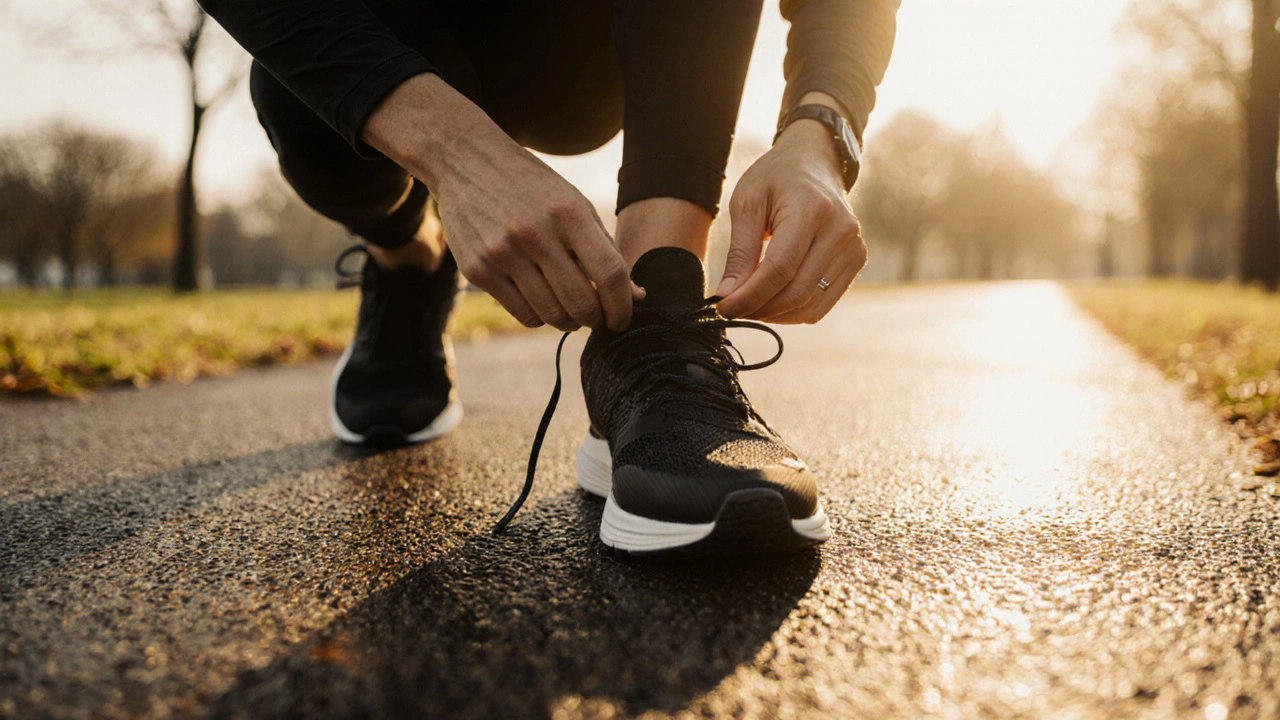
Real‑world example: Calgary’s River Trail
During a summer weekend, a group of Calgary runners split into two packs. One team wore their favorite cushioned shoes, the other tried a barefoot approach on the packed‑down gravel section of the Bow River Trail. The barefoot pack reported a tighter calf feel but praised the immediate feedback on uneven rocks, allowing them to adjust foot placement faster. After 10 km, both groups logged similar heart‑rate zones, but the shoed team felt less soreness in the forefoot.
Bottom line
There’s no universal answer. Sneakers give reliable protection and are ideal for high‑volume training on hard surfaces. Barefoot running can sharpen form, boost foot strength, and lower chronic joint stress-if you transition wisely and respect your body’s signals. The smartest move is to blend the two: use sneakers for long, hard‑surface runs, and sprinkle in barefoot or minimalist sessions on soft terrain to reap the benefits of both worlds.
Frequently Asked Questions
Can I run a marathon barefoot?
Running a full marathon barefoot is extremely risky unless you’ve spent months conditioning your feet on similar distances. Most marathoners use shoes with some cushioning for the latter stages to avoid fatigue‑related injuries.
Do minimalist shoes count as barefoot?
Minimalist shoes provide a thin sole and little drop, mimicking barefoot mechanics while offering some protection. They’re a good stepping stone but aren’t true barefoot running.
What’s the ideal cadence for barefoot running?
Aim for about 180 steps per minute, or roughly 90 steps per leg. Higher cadence shortens ground contact time and reduces impact forces, which is crucial when you lack cushioning.
Will barefoot running fix my plantar fasciitis?
Not automatically. While strengthening foot muscles can help, jumping straight to barefoot may aggravate the condition. A gradual minimalist transition combined with specific stretches is safer.
How do I choose the right running sneaker?
Look for a shoe that matches your foot type (neutral, overpronator, underpronator), offers a heel drop you’re comfortable with (6‑10 mm is common), and provides enough cushioning for your typical mileage and terrain.

